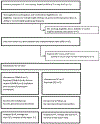Site-Randomized Controlled Trial of a Combined Cognitive Behavioral Therapy and a Medication Management Algorithm for Treatment of Depression Among Youth Living With HIV in the United States
- PMID: 34483297
- PMCID: PMC8585710
- DOI: 10.1097/QAI.0000000000002790
Site-Randomized Controlled Trial of a Combined Cognitive Behavioral Therapy and a Medication Management Algorithm for Treatment of Depression Among Youth Living With HIV in the United States
Abstract
Background: Depression is frequent among youth living with HIV (YLWH). Studies suggest that manualized treatment guided by symptom measurement is more efficacious than usual care.
Setting: This study evaluated manualized, measurement-guided depression treatment among YLWH, aged 12-24 years at 13 US sites of the International Maternal Pediatric Adolescent AIDS Clinical Trials Network.
Methods: Using restricted randomization, sites were assigned to either a 24-week, combination cognitive behavioral therapy and medication management algorithm (COMB-R) tailored for YLWH or to enhanced standard of care, which provided standard psychotherapy and medication management. Eligibility included diagnosis of nonpsychotic depression and current depressive symptoms. Arm comparisons used t tests on site-level means.
Results: Thirteen sites enrolled 156 YLWH, with a median of 13 participants per site (range 2-16). At baseline, there were no significant differences between arms on demographic factors, severity of depression, or HIV status. The average site-level participant characteristics were as follows: mean age of 21 years, 45% male, 61% Black, and 53% acquired HIV through perinatal transmission. At week 24, youth at COMB-R sites, compared with enhanced standard of care sites, reported significantly fewer depressive symptoms on the Quick Inventory for Depression Symptomatology Self-Report (QIDS-SR score 6.7 vs. 10.6, P = 0.01) and a greater proportion in remission (QIDS-SR score ≤ 5; 47.9% vs. 17.0%, P = 0.01). The site mean HIV viral load and CD4 T-cell level were not significantly different between arms at week 24.
Conclusions: A manualized, measurement-guided psychotherapy and medication management algorithm tailored for YLWH significantly reduced depressive symptoms compared with standard care at HIV clinics.
Copyright © 2021 Wolters Kluwer Health, Inc. All rights reserved.
Conflict of interest statement
The authors have no funding or conflicts of interest to disclose.
Figures



References
-
- Bing EG, Burnam M, Longshore D, et al. Psychiatric disorders and drug use among human immunodeficiency virus-infected adults in the United States. Arch Gen Psychiatry. 2001;58(8):721–728. - PubMed
-
- Gaughan DM, Hughes MD, Oleske JM, et al. Psychiatric hospitalizations among children and youths with human immunodeficiency virus infection. Pediatrics. 2004;113:e544–51. - PubMed
-
- Horberg MA, Silverberg SJ, Hurley LB, et al. Effects of depression and selective serotonin reuptake inhibitor use on adherence to antiretroviral therapy and on clinical outcomes in HIV-infected patients. J Acquir Immune Defic Syndr. 2008;47:384–390. - PubMed
Publication types
MeSH terms
Substances
Grants and funding
LinkOut - more resources
Full Text Sources
Medical
Research Materials

